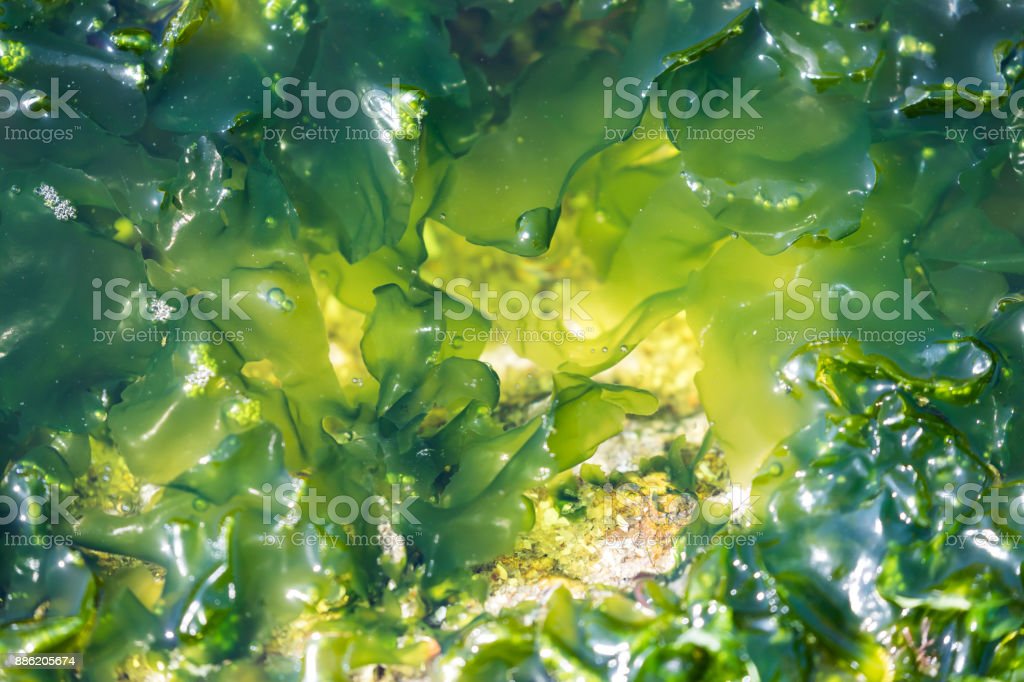Seaweed
*Photos and text for illustrative purposes only.
• The seaweed industry provides a wide variety of products that have an estimated total annual value of US$ 5.5-6 billion
• Commercial uses of seaweed: Fertilizer, cosmetics, food, building material, biofuel, bioplastic to name a few
• Food products for human consumption contribute about US$ 5 billion of this
• Substances that are extracted from seaweeds - hydrocolloids - account for a large part of the remaining billion dollars, while smaller, miscellaneous uses, such as fertilizers and animal feed additives, make up the rest
• Harvested either from naturally growing (wild) seaweed or from cultivated (farmed) crops
• Needs Light and seawater/ brackish water. Grows within 45 days, can be harvested straight away, and does not require any fertilizer
• Takes three forms - liquid, powder, flakes
• Seaweed farming aid in minimizing the carbon dioxide, nitrogen and phosphorous emission in the environment.
Seaweed comprises high protein content (25-35% of dry weight), vitamins and mineral salts, especially iodine. Its vitamin C content is about 1.5 times that of oranges and 75% of the protein and carbohydrates are digestible by humans. With vitamins A, B and E found abundantly in seaweed, it becomes a strong source for the healthy development of the human body. It is found in great abundance in almost all phaeophyceae (brown algae).
This is demonstrated in the at least six types of seaweeds in their daily diet.
Agar is a jelly-like substance, obtained from red algae. It is used in several ways: employed in the preparation of ice cream, jellies, desserts, etc., and also in sizing textiles and clearing liquids. It is used in the preparation of shaving creams, cosmetics and shoe polishes. The agar has constantly been used in biological laboratories for media preparation.
Due to the minerals and gases it absorbs from the nutrient-filled ocean, seaweed is a rich source of natural molecules for both nutritional and topical use. The extract can be used in two ways: either as an agent in preparation of products or as therapeutic agent itself.
The consumption of seaweeds significantly aids in improving overall health. Many bioactive compounds can be obtained from seaweeds to treat vitamin deficiency and thyroid imbalance, goiter and other health-related problems. It is also used to make antibiotics and sterilizers.
There are studies on its medical potential for printing cartilage and wound healing.
There are studies on its medical potential for printing cartilage and wound healing.
Seaweed manure has been found superior to farm yard manure. It seems to increase resistance to disease and decay from soil and induces faster growth and yield in leafy and fleshy vegetables, fruits, orchards and horticultural plants. Manure from seaweed holds water and air at the same time and improves the soil quality with both those parameters. Like other manure, seaweed has a similar role but also contribute the required potassium, sulphur, phosphorus and calcium.
Some countries have even industries to process sea weeds into suitable cattle feed. The manufacture of cattle feed from sea weeds is made principally from brown algae and the processed food is fed to cattle, poultry and even pigs. It has been recorded that dried sea weeds served as cattle food have enhanced the milk-yielding and egg-laying capacity of cattle and poultry respectively.
Seaweed is virtually non-inflammable and resistant to mould and it can be used as an insulating material without chemical additives.
Seaweed also generates oxygen, which benefits oxygen-poor dead zones Nutrients such as ammonia, ammonium nitrate, nitrite, phosphate, iron, copper, as well as CO2 are rapidly consumed by growing seaweed. Reefs and lakes are naturally filtered this way (seaweed is consumed by fish and invertebrates), and this filtering process is duplicated in artificial seaweed filters such as algae scrubbers.
Ocean afforestation is a proposal for farming seaweed for carbon removal. After harvesting the seaweed decomposes into biogas, (60% methane and 40% carbon dioxide) in an anaerobic digester. The methane can be used as a biofuel, while the carbon dioxide can be stored to keep it from the atmosphere. Seaweed grows quickly and takes no space on land. Afforesting 9% of the ocean could sequester 53 billion tons of carbon dioxide annually (annual emissions are about 40 billion tons). Among algal fuels' attractive characteristics are that they can be grown with minimal impact on fresh water resources, can be produced using saline and wastewater, have a high flash point, and are biodegradable and relatively harmless to the environment if spilled. Algae cost more per unit mass than other second-generation biofuel crops due to high capital and operating costs, but are claimed to yield between 10 and 100 times more fuel per unit area.
Researchers have developed a process to make bioplastic polymers from microorganisms that feed on seaweed. Scientists have produced a bioplastic polymer known as polyhydroxyalkanoate (PHA), which is biodegradable, produces zero-toxic waste and can be recycled into organic waste.
